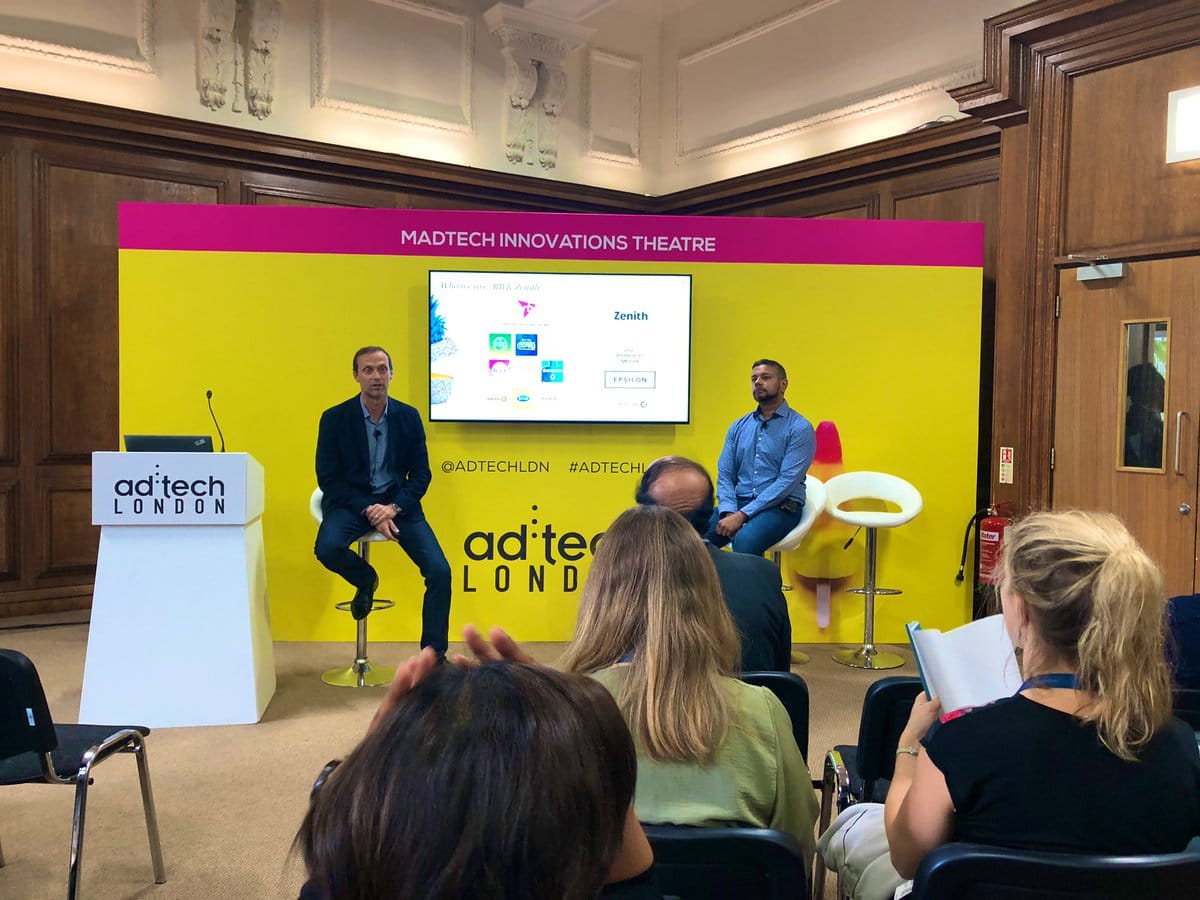Benoit Cacheux, Global Chief Digital Officer at Zenith, sat down with Ravi Jagdeo, Director of Digital Trading and Operations at RB at Ad:tech London to discuss personalisation and how brands can approach it at scale.
Zenith recently conducted research to better understand how consumers perceive, expect and like personalisation. When it comes to consumers expecting personalisation across three categories – advertising, commerce and services and support – we found that more than half of those surveyed across US, UK, Germany and China expect personalisation. We also saw a significant difference between younger audiences (aged 16-25) who had a high degree of expectations and wanted to see more relevancy in advertising versus an older audience (56+) who are more careful about their data and thus expect less personalisation.
In China, where they are about five to seven years ahead of Europe in how devices and technology are being used, there is almost no difference between age demographics when it comes to personalisation expectations. The landscape is slightly unique in China because consumers of all ages use technology more regularly. When it comes to advertising, there are different regulations and compliances that brands must follow.
Consumer expectations around personalisation differ dramatically by category and the type of personalisation. For Reckitt Benckiser, there are unique trigger points for each category. For instance, the baby care category is the most advanced and expected because of the push/pull research. Reckitt Benckiser’s infant nutrition brand, Enfamil, has focused on understanding trigger moments and delivering timely content and support. On Durex, the approach is different with personalisation more focused on the type of products and the different needs of various audiences segmented across age and gender. Interestingly, the telecoms and automotive category is where consumers have come to expect the most personalisation with support/products and services.
But do consumers actually like personalisation more than it’s expected? It depends on the category, the advertisers and the types of experience brands provide. For categories like soft drinks and shopping, expectations are low, but consumers actually value – and even more – like it.
To keep this trend positive between like and expect, brands must take certain considerations into account. Frequency is a big concern. There is limited time to make an impact from when consumers see the ads because of increased blocking power. Brands need to be careful when determining the best time to re-engage with consumers; if it’s wrong, they could be viewed as stalking users online. The goal is to keep the ‘like’ mindset and not to push people to unsubscribe or block. Managing this frequency is hard because of issues like walled gardens.
As part of this analysis on personalisation, we looked at a number of companies we believe excel at personalisation, which ultimately delivers business growth:
- Lyft’s full-funnel personalisation vertical does a good job at generating awareness and repeat usage. Once someone’s a customer, the company delivers personalised messages and further incentives to keep them coming back. This is tied with AI technology.
- Amazon is the gold standard when it comes to personalisation. Its homepage is filled with points of entry for personalisation and account recognition: what the user watched, listened to, ordered, etc., and all captures data to make the shopping experience – and beyond – seamless.
- Netflix completely personalises the images users see based on their age, gender and what they’ve watched, all designed to drive consumption. Their approach is heavily based on machine learning to automate this type of personalisation at scale.
- Starbucks started personalisation with their cup. The brand has evolved and now focuses on CRM and personalising the shopping journey through their mobile app. The app engages consumers based on use, and allows them to order on route, pick up in a separate section of the shop and even links the music played in-store to their Spotify account. All of this is designed to keep users coming back to the app.
We know that consumers won’t give up a lot of their personal information unless it’s for something they need and there’s a clear value exchange. From these examples, it’s clear that brands who provide a better user experience with utility can garner engagement and retention. The better we can track customer information in unique ways – i.e. sign-up information – the better we can customise their journey and map different stages of their purchase path to understand what messages and opportunities to put in front of them. Once a brand has gained a user’s trust and proven their relevancy, consumers are likely to be engaged for the long haul.
However, brands face a massive challenge with the impending death of the cookies. Markets such as the UK potentially have 40% of traffic without cookies with the combined penetration of Safari and Firefox browsers. Brands need to know how to target humans, not cookies, by evolving to persistent IDs.
When it comes to personalisation, think about where you want to personalise and at what stage: Do you want to be proactive and build the right segmentation model to deliver personalisation in the early part of their journey? Or do you want to focus when people come into a category and your personalisation becomes more reactive based on their behaviours? Or, do you focus efforts once you have purchase and customer data in order to drive loyalty? Finally, successful personalisation comes from starting with your products and services and working out how they can be personalised. By focusing first on products and services, advertisers will then be able to build better personalisation strategies by considering audience signals, first and third-party sources, contextual information, location and channel capabilities. From there, advertisers can fine-tune and customise their messaging, build test plans to demonstrate the impact and optimise to the desired outcome. Long live personalisation!
SIGN UP FOR ZENITH INSIGHTS



